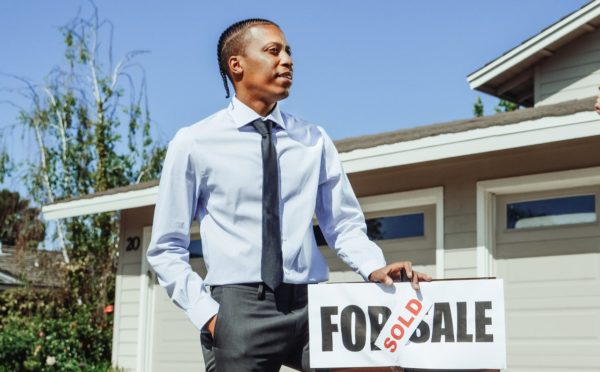A new study on African-American homeownership reveals that Blacks are buying homes at a lower rate than they have in more than 60 years. While COVID-19 has impacted multiple aspects of estate building in the Black community, this downward turn started before the global pandemic impacted the economy.

On Thursday, Oct. 13, the PEW Trust foundation released findings on Black ownership and believe they have identified reasons why fewer people of African descent are purchasing homes, noting that “Black homeownership fell in 2019 to 40.6%, down from the 2004 peak of 49.7%.”
Janneke Ratcliffe, vice president of the Housing Finance Policy Center at the Urban Institute in Washington, D.C., commented on the phenomenon, saying, “To see the Black homeownership rate lower than the generation before is shocking, considering what earlier generations faced.”
Some of the factors that have become roadblocks to Blacks accessing this trophy of the American dream have been around since the end of Jim Crow but now have put on a different face.
Redlining Remains a Problem
Redlining is still an issue, the report revealed, and so is gentrification.
Less than a month before the study was released, The New York Times reported that the Justice Department accused a New Jersey-based bank of redlining certain communities as a way to keep Black and Latinx from purchasing homes in particular neighborhoods.
On Sept. 28, Lakeland Bank, while admitting no wrongdoing, agreed to create a $12 million homeownership fund. This federal settlement made history, becoming one of the largest deals made between the country and a bank of its kind.
From 2021 to 2022, the DOJ has negotiated similar deals with lenders in big cities like Houston, Memphis, and Philadelphia.
Gentrification a Factor
One woman believes gentrification is often exploitative, noting that buyers tried to offer her less money than her property worth for her to sell, Buzzfeed reports.
Keisha Credit inherited her grandfather Daniel Duncan’s home in Seattle. A day after Duncan died, Credit received a handwritten note asking to buy the home for less than the market value.
“When I inherited my home from my grandfather, literally the day after he passed away, there were letters in the mail asking me to buy my house,” Credit stated in the video. “I cannot tell you how many predatory letters I’ve got to buy my home below market value.”
“My home was solicited not just by ‘big corps’ and ‘real estate companies’ looking to lowball by mailers. This [handwritten letter] was from a neighbor in my community…the day after my grandfather’s body was carried across his threshold for the last time,” she continued.
The home was worth millions, but the offers she consistently received were as low as $800,000.
History of Black Homeownership Decline
The Great Recession and an increasing number of big-time investors coming in and buying up Black homes from homeowners in need of big paydays have also contributed to why fewer Blacks are actually owning the homes they live in. This has created a more profound impact than in the early 1960s, an era before congress passed civil rights legislation like the 1968 Fair Housing Act to protect people of color from systemic discrimination in housing.
According to the report, “The gap between White and Black homeownership rates is wider now than it was in 1960 when housing discrimination was rampant and legal, U.S. Census Bureau data shows. In 2022, 74.6% of White households owned their homes, compared with 45.3% of Black households — a gap of more than 29 points. In 1960, the White homeownership rate was 65%, and the Black rate was 38%, a 27-point gap.”
The Urban Institute is working to cause a shift in this trend, targeting dozens of states and Washington, D.C., and providing policymakers and community stakeholders with strategies to help springboard homeownership. These strategies also include providing financial assistance to cover down payments and closing costs for some Black homebuyers and also providing support to those who have homes and face foreclosure, the National Fair Housing Alliance shares.
Washington Mayor Muriel Bowser has unveiled a plan for residents of the District of Columbia.
Her goal is to get 20,000 Black households to become homeowners by 2030.
Bowser also proposes the city use $10 million “to create a public-private fund that would make homes more affordable to Black families; help residents transfer homes to their children and heirs, and accelerate zoning and permitting for affordable units.”
At a press conference, she said, “We know if we can close that gap we can increase Black wealth in our city. We know that that is the way to pass down generational wealth.”
During the same press conference, Brittany Freeman, a woman who grew up in transitional homeless housing and government assistance, said she received city-sponsored support for her down payment and closing-cost assistance to buy her first house even before she graduated from college.
Freeman said, “Homeownership is possible, and I am definitely my ancestors’ wildest dream.”
Down payment assistance is one of the efforts that Ratcliffe suggests is important for changing the negative trajectory spotlighted in the study.
The study also showed Black homeownership was not in decline in every state.
“Between 2010 and 2021, the percentage of Black residents who owned their homes rose by 3 points in New York and Delaware and 2 points in South Carolina and Illinois, according to the Census Bureau’s American Community Survey,” the report presented.
“During the same period, Black homeownership dropped by 3 points in Mississippi, Ohio, Tennessee, and Texas, as well as in the District of Columbia.”
The study added, “last year, the city with the lowest Black-White homeownership gap was Jersey City, New Jersey, a rental-heavy city where the White homeownership rate was 32%, compared with 25% for Black households. Detroit (59% to 50%) and Philadelphia (58% to 48%) also had relatively small gaps,” stating the most affordable states in America for families are Kansas, Maryland, and West Virginia.
Adding to these statistics is Bank of America, which, according to Forbes, has created the new Community Affordable Loan Solution to help cities support Black and Latino homeowners.
Brookings Institution states that over the last 10 years housing wealth has shot up in 917 cities. In 2010, the housing wealth figure was $15.9 trillion, and by 2020 it leaped to $24.1 trillion.




